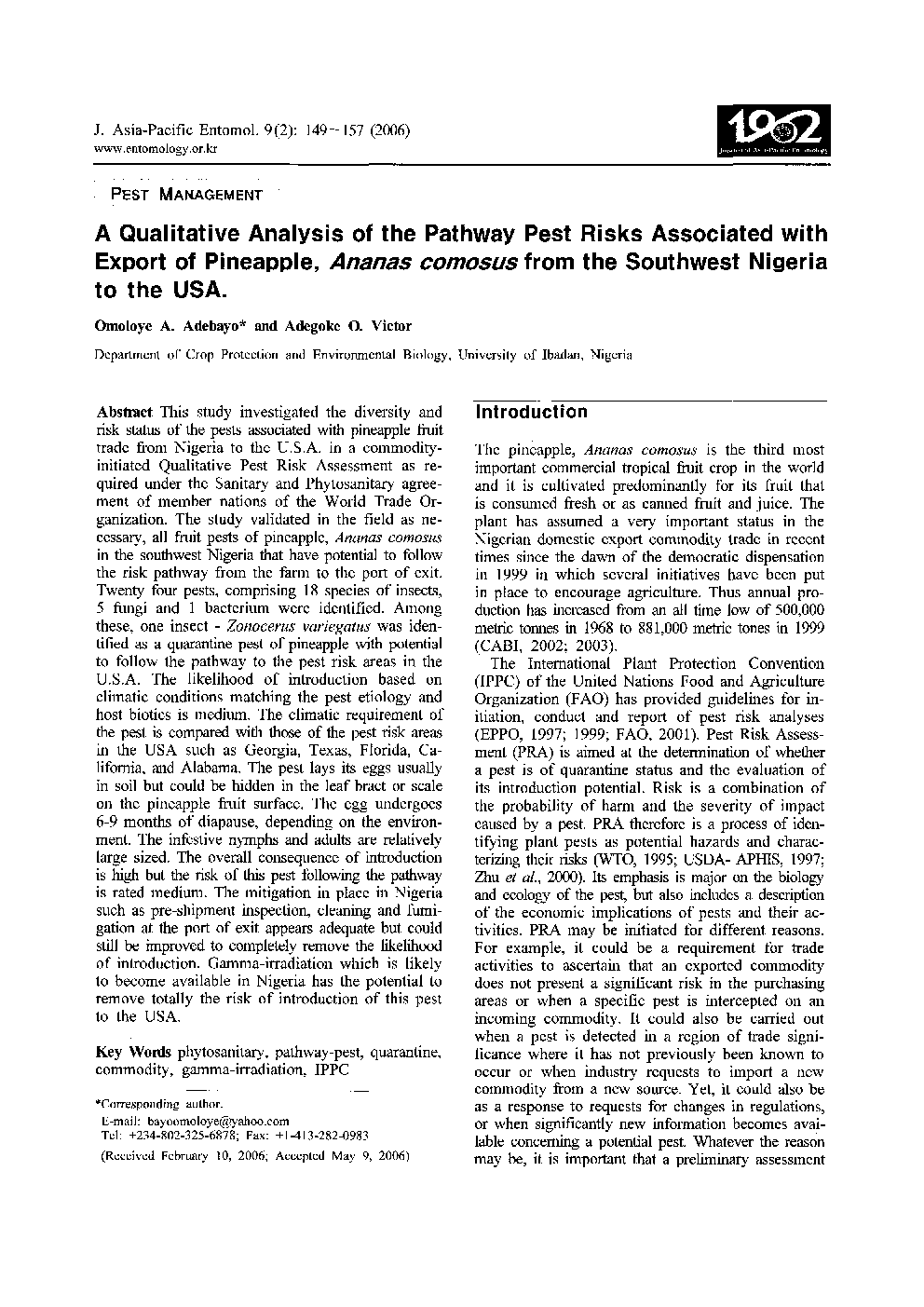| Article ID | Journal | Published Year | Pages | File Type |
|---|---|---|---|---|
| 4525189 | Journal of Asia-Pacific Entomology | 2006 | 9 Pages |
This study investigated the diversity and risk status of the pests associated with pineapple fruit trade from Nigeria to the U.S.A. in a commodity-initiated Qualitative Pest Risk Assessment as required under the Sanitary and Phytosanitary agreement of member nations of the World Trade Organization. The study validated in the field as necessary, all fruit pests of pineapple, Ananas comosus in the southwest Nigeria that have potential to follow the risk pathway from the farm to the port of exit. Twenty four pests, comprising 18 species of insects, 5 fungi and 1 bacterium were identified. Among these, one insect — Zonocerus variegatus was identified as a quarantine pest of pineapple with potential to follow the pathway to the pest risk areas in the U.S.A. The likelihood of introduction based on climatic conditions matching the pest etiology and host biotics is medium. The climatic requirement of the pest is compared with those of the pest risk areas in the USA such as Georgia, Texas, Florida, California, and Alabama. The pest lays its eggs usually in soil but could be hidden in the leaf bract or scale on the pineapple fruit surface. The egg undergoes 6-9 months of diapause, depending on the environment. The infestive nymphs and adults are relatively large sized. The overall consequence of introduction is high but the risk of this pest following the pathway is rated medium. The mitigation in place in Nigeria such as pre-shipment inspection, cleaning and fumigation at the port of exit appears adequate but could still be improved to completely remove the likelihood of introduction. Gamma-irradiation which is likely to become available in Nigeria has the potential to remove totally the risk of introduction of this pest to the USA.
